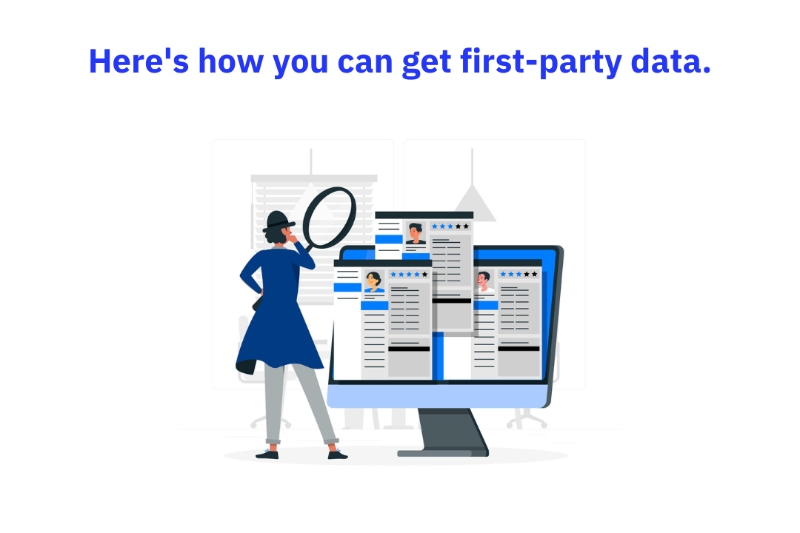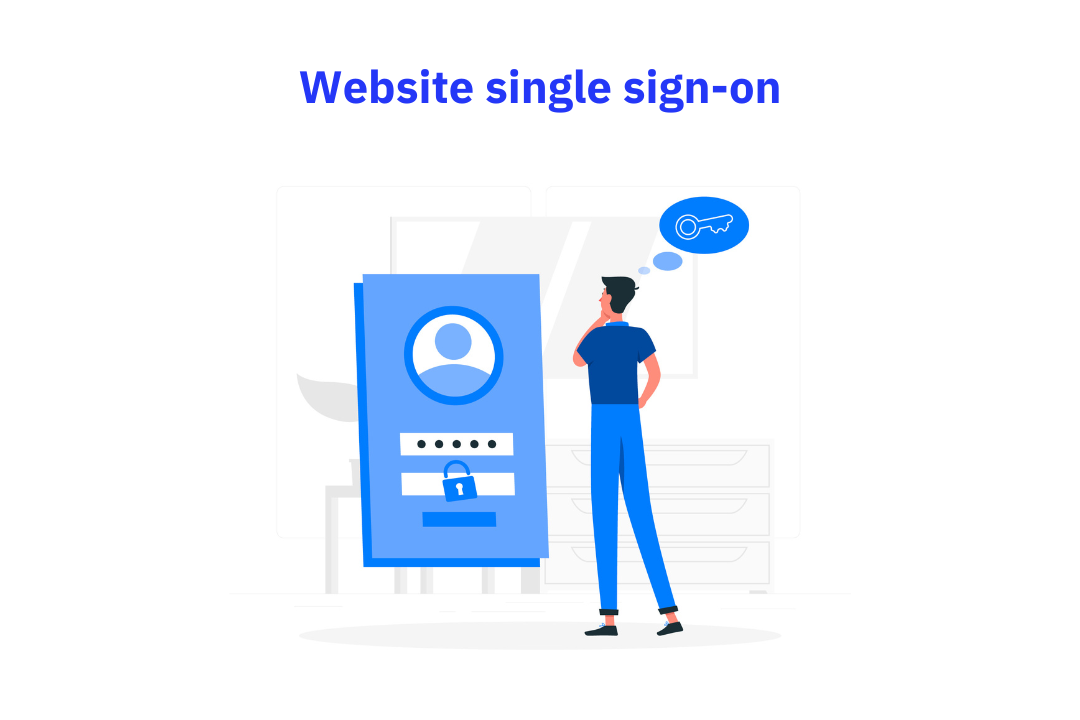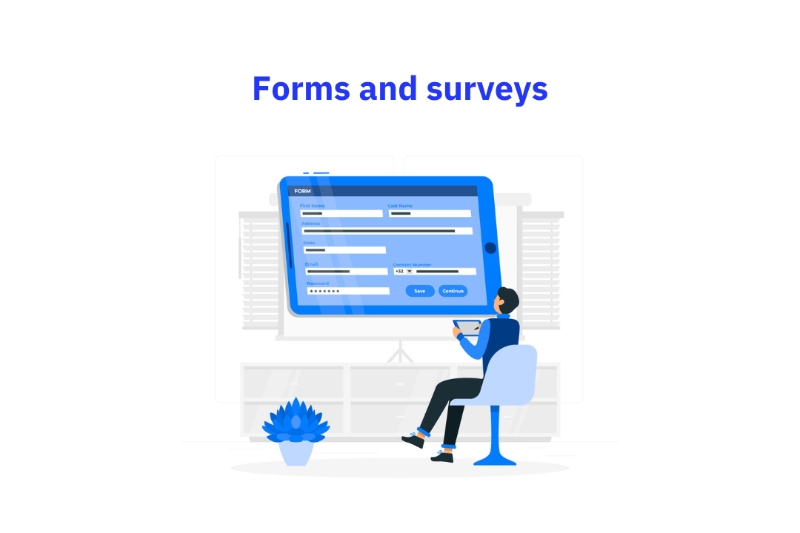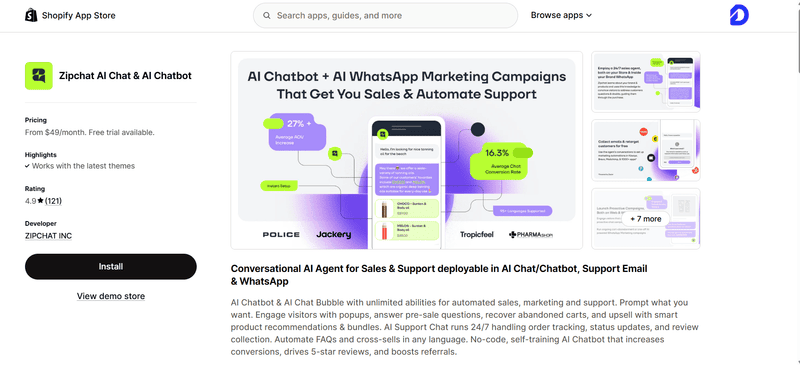
Companies are moving away from using third-party data, and rightly so - Google has stated that third-party cookies will no longer be used in Chrome by the end of 2023, joining a growing list of browsers that have abandoned the infamous tracking technique of gathering users’ online data.
Apple’s iOS 14 now allows users to opt out of app tracking. Changing privacy rules in the US and the europian union will soon obtaining third-party data using cookies next to impossible.
While this change undoubtedly affects how businesses collect and use data, there's a solution - First-party data. Most marketers have already started looking for ways which can help them get first-party data accurately and sustainably.
First-party data is also necessary for businesses to provide a tailored experience to their consumers in an increasing demand for personal experiences.
What is first-party data?
First-party data, also known as 1P data, is amongst the many forms of customer data available for marketers to create targeted marketing campaigns. First-party data is the data that customers directly give to brands with their consent.
First-party data is gold for your marketing teams as it-
- Segment your marketing campaigns.
- Map your customer's journey.
- It is exclusively available and owned by you.
- It's free!
First-party data is the information that companies collect directly from the user. This information can be collected using a mix of online and offline channels like mobile apps, websites, social, or surveys.
How to collect first-party data -
Using website single sign-on to collect first-party data

Signing in to the system with a username and password is one of the most common ways to access a system. In many cases, however, users will want to use more than one system to perform their daily activities, this is where Single Sign-on (SSO) comes into play.
You can use SSO for two main reasons:
- To save time by eliminating the need for multiple logins.
- To provide security by allowing only authorized users access to specific systems or applications.
To drive single sign-on, you can offer your customers personalized website experiences, product recommendations, options like wishlists and carts, and even straight-up discounts.
Forms and surveys to get first-party data

Surveys are a great way to collect first-party data because they allow you to ask your users questions that they're likely to answer honestly. They also make it easy for you to monitor the effectiveness of your campaigns over time.
Forms, on the other hand, are less effective than surveys because they don't provide a way for users to tell you what they think about your product or service.
However, forms are much simpler than surveys and can be used for quick feedback on basic features or questions about pricing or shipping options.
How to use first-party data to increase revenues?You can also achieve maximum data acquisition through forms and surveys by offering customers who fill them something in return.
Using Feedback to collect first-party data

To collect first-party data, start by looking at the reviews and feedback left by your clients. This can give you a good idea of their pain points, what they love about your service, and how you can improve.
This method can be used to collect information about your users, their behaviour, and what they like and dislike about your product or service.
You can also use feedback to ask users questions about their experience with your company, including what they liked, disliked, and how they felt about the experience as a whole.
It’s also important to remember that this is not just about collecting data from customers who have already purchased from you.
It’s also important to get early feedback from people who haven't purchased yet because they might soon be considering making a purchase or creating a trial account with your company.
Product registration to collect first-party data

Product and warranty registrations have quickly become the most efficient way of collecting first-party data, especially for consumer brands selling online.
How does product registration work to get you first-party data?
Product registration software like Dyrect uses the product ownership experience to bring you first-party data of your customers. Dyrect is a product registration software which works by having unique QR codes placed inside your product packaging.
When a customer buys your product from any channel, they scan the QR code to register their product to claim loyalty points, register their warranty or access any other essential post-sales service.
The users can scan the QR code with any app and even their phone camera. The QR code directs users to a custom build web app, wherein users can register their product for any future claims in just a single click.
The users do this by entering in their personal and product details, with single-sign-on features enabled, giving them the option to sign in through Google and Truecaller. This means that users do not have to remember their credentials for signing in, and all the details submitted are verified.
Once a customer is registered, you can reach out to customers by email, SMS and WhatsApp (using the data provided on the web app) with confirmation messages and links for future claims.
This enables you to reach customer personally, opening up remarketing and reselling opportunities.
Whenever a customer wants to claim a warranty or access another post-sales service, all they have to do is go on the web app, using links in their emails, SMS and WhatsApp, and click a button.
Ready to get first-party data?
Leading e-commerce brands are using product registration software like Dyrect to collect first-party data and connect with all their customers.
Dyrect has enabled marketing teams of leading brands to access first-party data, with a data acquisition rate as high as 40%. Click here to know how Dyrect helps brands gather customer data. To know how Dyrect can help you collect first-party customer data, book a demo with our solution experts here.


